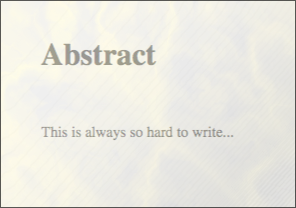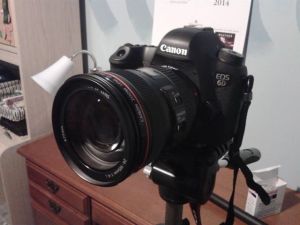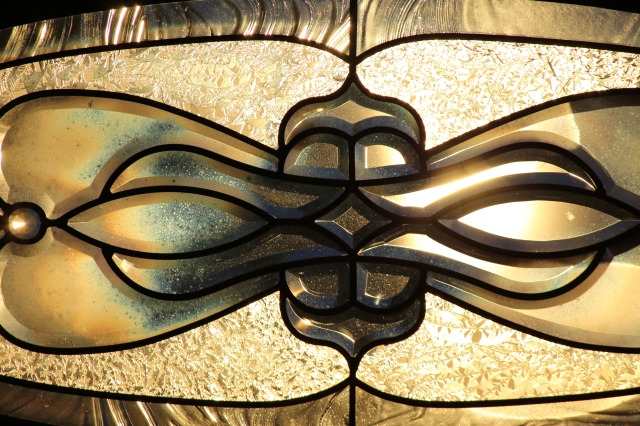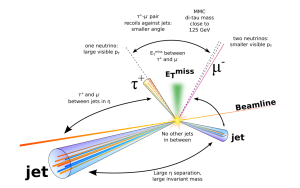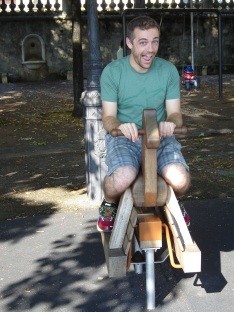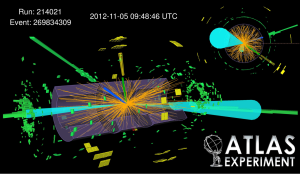
A reconstruction of an event recorded in the ATLAS detector that has been assessed by our analysis to be extremely likely to be a Higgs boson decaying to two taus. One of the taus has decayed to an electron and the other decayed hadronically, the configuration I have been personally looking for the past two years.
ATLAS now has a new result out there, and it’s the one I’ve been working on for the past 2 years! I still need to assess how much I can talk about the nitty gritty details of our analysis, I can only go with what the ATLAS collaboration has officially approved. Nevertheless, I’m planning a series of posts with my various thoughts on the topic. It’s been a wild ride with lots of juicy stories.
On November 26, there was a special seminar at CERN presenting the result of the search for the Higgs boson decaying to fermions. The presentation was conducted by Dr. Aliaksandr Pranko, someone I had the chance to collaborate with very closely during this analysis. He did a truly excellent job. You may be able to watch the presentation here (under Recent Broadcasts), once it’s been archived on the CERN webcast website. At the very least, you can find the slides here, and the conference note (which serves as a preliminary paper) has just been made public here.
What is this result? Why is it important? Didn’t we already find the Higgs boson? There’s already a Nobel Prize awarded for that thing! What are you talking about?
The Higgs boson was a very precise prediction in particle physics, at least by comparison with the predictions made by current models that attempt to go deeper than the Standard Model. The only thing we couldn’t infer was its mass, but once its mass was determined, we could deduce all of its physical properties. Fundamental particles are pretty simple objects: they only have a few properties. They are:
- Mass : As far as we can tell, the mass of a fundamental particle is unique. Except maybe for the particles that are massless while still being distinct: photons and gluons.
- Spin/Polarisation : Spin is one of these esoteric quantum mechanical properties that are very hard to explain in a satisfying manner. The number of spin states a particle can take determines a lot of its behaviour. Among other things, it determines whether the particle is a fermion or a boson. The former would make the particle a constituent of matter while the latter would make the particle a force carrier, responsible of mediating interactions between the constituents of matter.
- Couplings : Couplings are the buzz word used to talk about which particles one specific particle can interact with. For example, leptons such as electrons will couple to W and Z bosons, the mediators of the weak interaction. On the other hand, they won’t couple to gluons, the mediators of the strong interaction. Couplings determine not only what happen when two particles run into each other, they also determine what an unstable particle will decay to.
The Higgs boson couples to any fundamental particle that has mass. At least, this is what we have been hoping for, because it’s not strictly necessary in the theory of the Standard Model. The Higgs mechanism (note that I distinguish the Higgs mechanism from the Higgs boson) was designed to explain how the electroweak force splits into the electromagnetic force and the weak force in our day-to-day experience. You may ask, why did we think they were a unified force to begin with? This is a very interesting question too, but would take a bit too long to explain for the point I am trying to make here.
In order to break the electroweak interaction in two forces, what you need to do is make some of the bosons responsible for this interaction massive and some others not. As you may guess, the photon, which ends up mediating the electromagnetic interaction ends up massless, but the W and Z bosons end up gaining mass with the Higgs mechanism. That’s all the Higgs boson was intended to do in the first place.
But it was quickly realized that the Higgs boson could give mass to all more fundamental particles, not just to the W and Z bosons. This could be achieved not by the Higgs mechanism itself, but with another type of interaction we like to call Yukawa couplings. The Higgs boson could potentially have Yukawa couplings to quarks and leptons, giving them their masses in the process.
And this is the most exciting part of our new result. ATLAS just showed that the Higgs boson decays to pairs of tau leptons, which means that the Higgs boson does couple to leptons via what appears to be a Yukawa coupling. More precise measurements of the tau leptons coming out of that Higgs boson will reveal if we really have the predicted Yukawa coupling or not. We’ll have to get a lot more di-tau pairs from Higgs bosons in our data to sort this out, but we’re off to a good start with this 4.1 sigma signal.
I’ve been involved from almost beginning to start in this analysis. My most recent contribution being that I was responsible for the final step in the assembly of this plot:
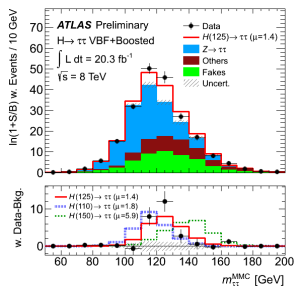
The di-tau invariant mass of the collision events entering our analysis, but with weights applied in a way that the events expected to be the most signal-like are enhanced. When enhancing these events, a clear discrepancy becomes visible between the Standard Model events that we would expect if there was no Higgs and the data. That discrepancy looks eerily like a Higgs boson signal with a mass of 125 GeV, which is compatible with what’s been seen in other Higgs decay modes.
Just to be clear, I didn’t make that plot on my own. It would be terribly unfair to claim something like that. All the work that went behind it is very hard to quantify, and I can tell you that at least 5 other people were directly involved in making it. I just put the pieces together, but I didn’t make the pieces. Esteemed colleagues Noel Dawe, Thomas Schwindt, Damian Alvarez, Stan Lai and Louis helary were instrumental in realizing this plot.
So we’ve essentially shown that the Higgs boson couples to leptons. It’s also the first direct evidence that the Higgs couples to fermions in general, although I don’t like to emphasize that statement as much. The first evidence for the Higgs boson was in the decay to a pair of photons. But the Higgs shouldn’t couple to photons because they are massless! So how does this decay to photons even take place? The answer is this Feynman diagram right here:
So the Higgs (H) first couples to virtual top quarks (indicated by the t‘s on the diagram), and these virtual top quarks in turn couple to photons (γ’s). The top quarks are called virtual because you would never really see them in the detector from that Higgs event. They exist temporarily to allow the Higgs to decay to a pair of photons. If the Higgs wouldn’t interact with top quarks, which are fermions, this process wouldn’t have been observed. In fact, the Higgs wouldn’t even be produced in the way that is described in this diagram, as you can spot another top quark loop involved in the production of the Higgs boson to the left. This is not the only production mechanism though, but it is the most abundant.
So with the Higgs decaying to two taus, we haven’t shown for the first time that the Higgs decays to fermions. The coupling to fermions can be deduced from the observation of the Higgs going to photons. However, we did show that it couples to leptons for the first time. That I think the biggest reason why our result is notable. There are others, but to be honest I don’t understand them so well yet. There is so much to say about it, I’ll have more to say very soon, as I finally get to writing my thesis 🙂

